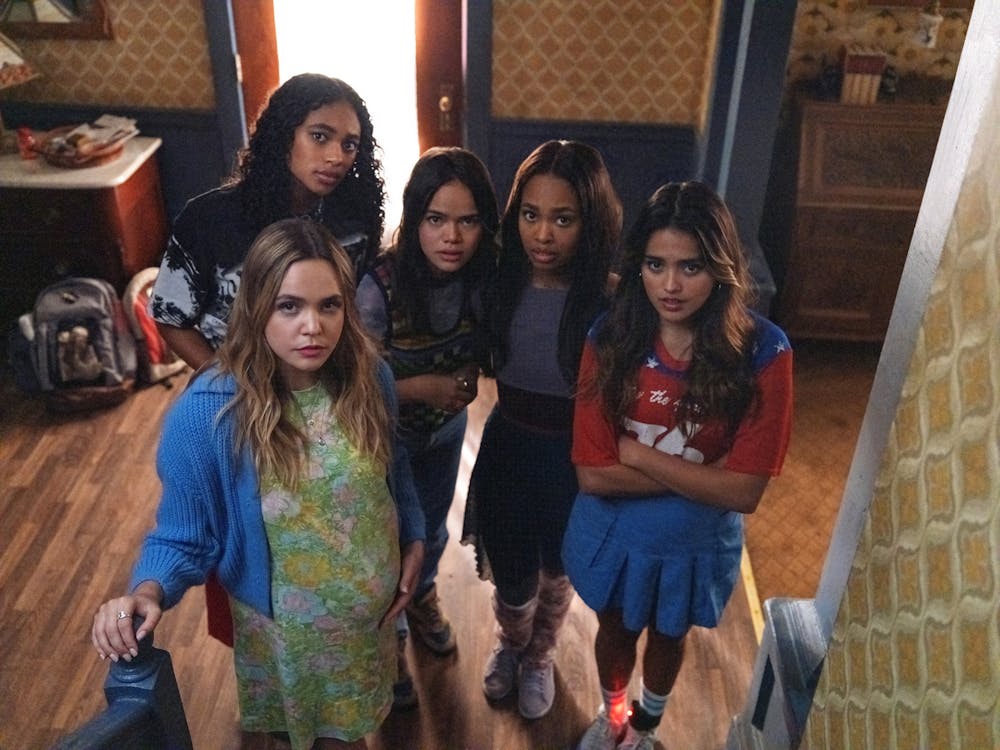School is back — and so is another attempt at rebooting an early 2000s show. This time, “Pretty Little Liars” is getting ready for its Gen Z makeover in a HBO Max rework, “Pretty Little Liars: Original Sin.”
Unlike HBO Max’s other recent attempt at revamping a teen classic — “Gossip Girl” — “Original Sin” sets itself apart by not simply being a copy and paste of the original.
Set in Millwood, just a town away from the setting of the original series, the show introduces a new slate of teen girls who find themselves tormented by an anonymous figure known as “A,” similar to in the original.
But that is pretty much all the two series have in common. Long gone are the days of “A” tormenting the girls with cereal boxes full of tiny As and passive aggressive blackmail texts. Now, “A” has transformed into a full slasher villain with a scary leather mask and a penchant for murder.
This new vision for a show previously anchored in drama, secrets and dizzying mysteries is the product of Roberto Aguirre-Sacassa, the producer of the infamous and campy “Riverdale” franchise. And for the most part, his vision works well.
From the clothes to the setting and characters, “Original Sins” knows what it’s going for: a true teen horror show. It’s definitely different from the original “PLL” and sometimes even unrecognizable. Still, it’s refreshing, and that’s way better than another reiteration of the same show, especially considering the original “PLL” only ended in 2017 and already had a failed spin-off that ended in 2019. Plus, the horror aspect makes it stand out even in its own genre and provides an exciting twist.
But the distance from the original show is both a blessing and a curse.
The friendship between “the Liars” — the five female protagonists — and their unique personalities were one of the key elements of the original. “Original Sin” tries to emulate that dynamic with the new squad of Liars: Imogen, Tabby, Mouse, Faran and Noa. The only problem is that “Original Sin” forgets to do all of the character development that would make audiences invested. In the original show, multiple episodes of lore tied together the friendship between the girls and contextualized the main mystery. In the reboot, a “Breakfast Club” moment during detention and a shared hatred for the school’s mean girl is enough to make these girls inseparable out of nowhere despite having attended the same high school together for years.
One of the most appealing parts of the original show was that you could pick out the personalities of the Liars so well. Spencer was the smart one, Hanna was the fashionable one, Aria was the artsy one, Emily was the sporty one and Alison was the queen bee. It was reductive, sure, but effectively communicated the girls’ identities, allowing the show to build each of their separate storylines. Plus, each of the girls’ stories in the earlier seasons were directly tied to a mysterious secret, which automatically made viewers become invested.
“Original Sin” takes this idea and runs with a shell of the original intention. Sure, the girls have their own separate identities and their own storylines. But for the most part, it’s just random and convoluted. For example, Mouse’s storyline focuses on her pretending to be the child of a man who lost his own child in order to find her biological father. Not only is it unrelated to the overall mystery and narrative of the show, it gives viewers a headache just thinking about it.
Still, these mistakes would not be as evident if “Original Sin” didn’t live under the “PLL” brand. Of course, there would still be plot holes and flaws, but they wouldn’t be as glaring. The show would have the freedom to create the characters and story that have their own aesthetic and themes, rather than those that naturally coincide with “PLL.” “Original Sin” would not have to worry about existing in the same universe as the original show.
At their best, the references to the original “PLL” seem like boring, half-baked attempts at appeasing fans that don’t serve the plot. At their worst, it exposes the show’s mediocre attempt at fixing problematic plot lines of the original show — for example, the show gestures at the large number of inappropriate relationships between teen girls and grown adults in the original.
With “Original Sin” just recently renewed for a second season, it's unclear what viewers should expect from the show's sophomore season. On one hand, viewers can hold out hope that the show can lean into the slasher genre and improve on its weaker storyline. However, that’s something hard to believe in, considering how much the show relied on the “PLL” brand and Aguirre-Sacassa’s track record for producing shows that go completely off the rails in later installments.





